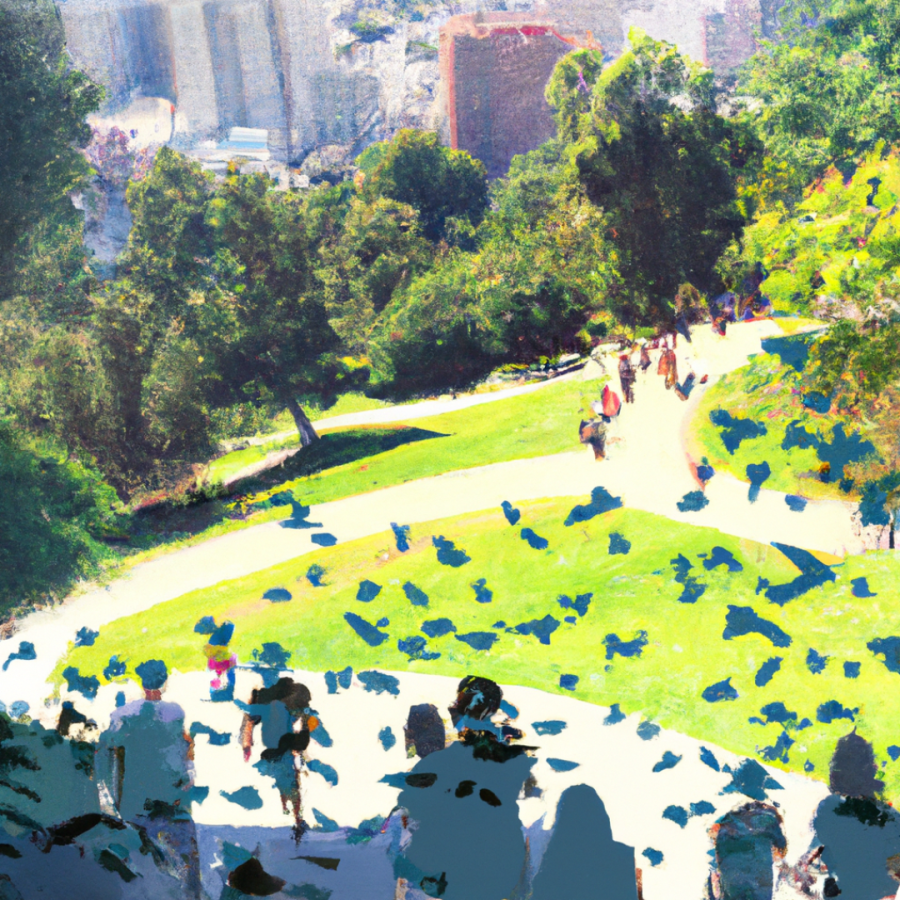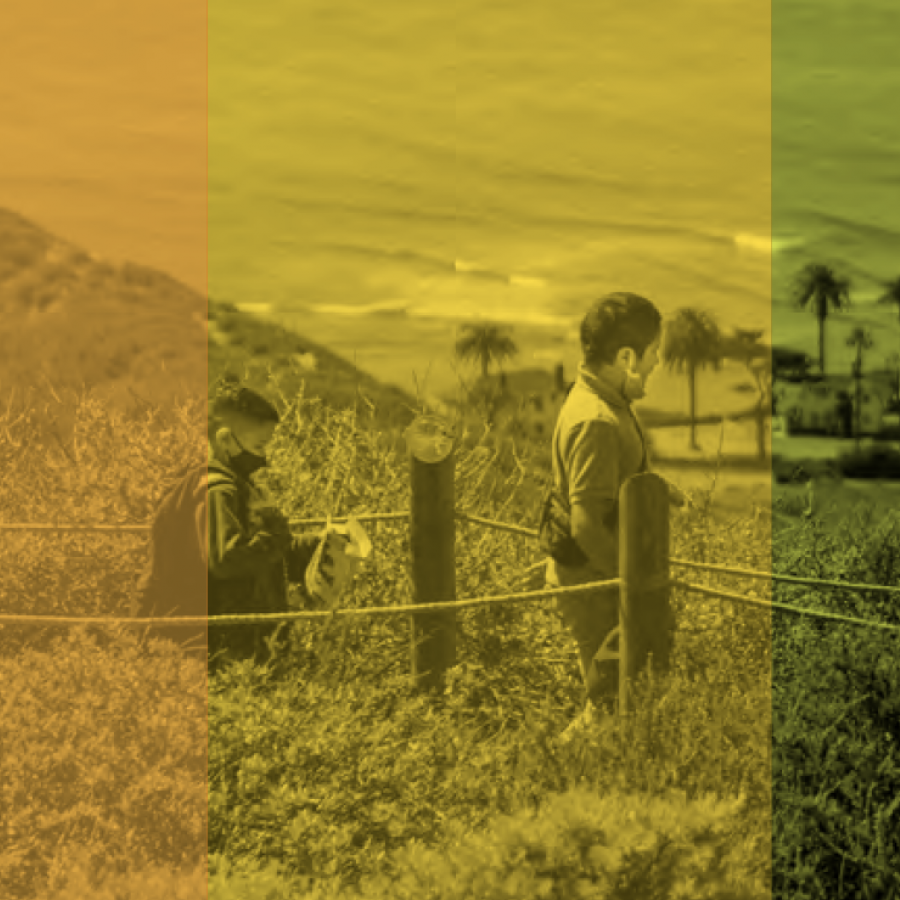Green Space Equity Glossary
This glossary provides definitions and explanations of key terms, concepts, and policies related to housing equity, environmental justice, and green spaces. It serves as a supplemental resource for the report, Exploring Economic Insecurity and Green Space Equity in Los Angeles County.
Affirmatively Furthering Fair Housing (AFFH) Rule: This provision of the 1968 Fair Housing Act mandates that the US Department of Housing and Urban Development (HUD) and the organizations it funds take active measures to eliminate housing discrimination, address disparities in housing needs, and remove barriers to equal access in housing opportunities. The Biden administration is currently preparing updated guidelines for the AFFH rule, which will supersede the 2015 guidelines established during the Obama administration. During the 2023 public comment period, advocates pressed for the inclusion of specific requirements in the updated AFFH rule to ensure equitable investment in parks and green spaces.
Ballot Measure A: Passed in 2016, the Los Angeles County Safe, Clean Neighborhood Parks and Beaches Measure (Measure A) imposes a 1.5-cent parcel tax per square foot on private development. The revenue generated from Measure A is dedicated to the maintenance and improvement of the county’s parks, beaches, natural areas, and other open spaces. Seventy-five percent of Los Angeles County voters approved the measure.
Brownfield: A brownfield is a property where expansion, redevelopment, or reuse may be complicated by the presence or potential presence of hazardous substances, pollutants, or contaminants, according to the Environmental Protection Agency.
De Facto Segregation: This term describes the persistence of residential, occupational, and social segregation along racial, ethnic, class, or cultural lines even after the repeal of legal (de jure) segregation. Factors such as long-standing racial income and wealth gaps can perpetuate affluent, majority-white neighborhoods, while legal changes may lead to "white flight," where white families move out of integrating areas en masse. In cities like Los Angeles, de facto segregation remains widespread and impacts access to park-rich areas. In turn, it is a racial equity issue because these green spaces are often concentrated in higher-income neighborhoods with large shares of white residents.
Environmental Justice: This principle advocates for equal environmental protection and access to clean, safe natural spaces for all people. It addresses environmental racism, which refers to systemic inequalities that expose communities of color to higher levels of pollution and greater risks from climate crises and natural disasters. Environmental justice focuses on improving conditions within metropolitan areas, differing from environmentalism, which often emphasizes the preservation of undeveloped natural lands.
Green Space: These spaces are open areas in urban or suburban environments that include trees, vegetation, and facilities for recreation and social interaction. Examples of green spaces include parks, community gardens, playgrounds, hiking trails, and wetlands. These areas are designed to enhance community well-being and provide environmental benefits.
Index of Concentration at the Extremes: Developed by sociologist Douglas Massey, this measure quantifies social inequity by assessing the geographic distribution of wealth and resources. In our analysis, we use this index to evaluate the relative concentration of high-income earners and the availability of park space in each census tract. (Further details on the Index can be found in the methodology section of the analysis.)
Inflation Reduction Act (IRA): Enacted in 2022, the IRA aims to reduce inflation by addressing the federal deficit, reforming taxes, lowering prescription drug prices, and investing in climate resilience and clean energy. It represents a significant investment in combating climate change through energy efficiency, pollution reduction, and urban infrastructure improvements, which could accelerate investments in green spaces.
Infrastructure Investment and Jobs Act (IIJA): Also known as the Bipartisan Infrastructure Law (BIL), this 2021 federal law authorizes $1.2 trillion for transportation and water infrastructure, broadband expansion, and clean energy investments. Park equity advocates consider IIJA programs, such as the Reconnecting Communities Pilot (see below), as potential avenues to promote green space development.
Joint-Use Agreements: These formal agreements between government entities, like local governments and school districts, allow for the shared use of public facilities. For example, a joint-use agreement might permit community access to school playgrounds and fields outside school hours.
Land Speculation: This practice involves purchasing vacant or underdeveloped land with the intention of either developing it for profit or holding it until its value increases due to nearby development. Historically, land speculation was key to the growth of the Los Angeles metropolitan area. However, it also contributed to the underinvestment in public parks, often prioritizing private developments over the expansion and maintenance of public green spaces.
Linguistic Isolation: The American Community Survey defines a linguistically isolated household as one where no members over the age of 14 speak English “very well.” Individuals in such households often face significant barriers to accessing employment, education, and social services. Parks and other public green spaces offer essential gathering places for linguistically isolated residents to connect and build community.
Low-, Middle-, and High-Income Neighborhoods: In this analysis, neighborhood income levels reflect the relative share of households within each census tract that earn above 200 percent of the federal poverty level. Low-income neighborhoods are in the 20th percentile or below, high-income neighborhoods are in the 80th percentile or above, and middle-income neighborhoods fall in between these extremes.
Park Coverage: Park coverage levels reflect the extent to which land is covered by parks or green space.
Park-Deficient and Park-Rich Neighborhoods: Park-deficient neighborhoods are those in the bottom 20 percent of park coverage, while park-rich neighborhoods are in the top 20 percent. This classification helps assess the relative availability of green space across different areas.
Park Equity: This concept focuses on the equitable and just distribution of parks, open spaces, and recreational resources. It emphasizes ensuring that all communities and their residents have access to and can benefit from safe, clean, and high-quality public spaces.
Pocket Park: These small public parks are designed to fit into compact urban or suburban areas, and they are often situated between or beside existing developments.
Privatized Space: Some land or property is owned by individuals or businesses, rather than being managed or controlled by public entities or government institutions. In metropolitan areas like Los Angeles, it is common to find green spaces or outdoor areas that are privately owned and operated. These could be spaces designed for individual families (e.g., front lawns and backyard swimming pools) or public consumerism (e.g., plazas, promenades, and malls). Privatized green spaces often result from inadequate public investment in community parks, but they can also contribute to ongoing underinvestment in green spaces.
Reconnecting Communities Pilot (RCP) Grant Program: Funded and operated by the US Department of Transportation and funded through the IIJA (see above), this pilot program supports planning and capital construction projects that revise existing infrastructure and transportation systems, such as freeways and rail lines, to reconnect divided communities. Park equity advocates have called for the use of RCP grants to develop new green spaces along outdated transportation corridors.

